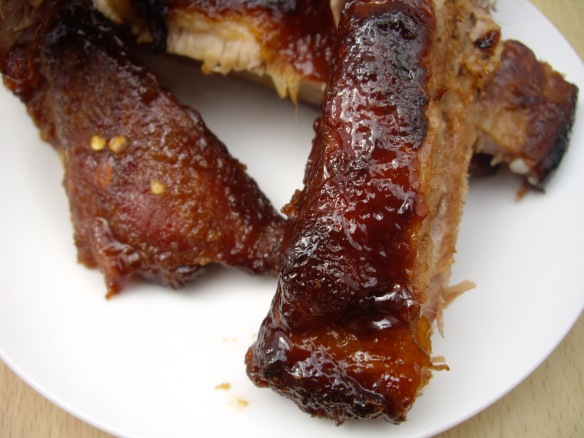Easter rolled around and before I knew it, I’d invited my family over for dinner on Sunday. I wanted to do something different and soon settled on gammon cooked in Coca Cola. Yeah, when I say different, I mean it. There are numerous recipes for meat cooked in fizzy pop, not least my pulled pork recipe which uses Cherry Coke. The recipe for a Coca Cola gammon joint is very simple, inexpensive and guarantees tasty results every time. Once cooked and glazed, this bad boy can go with any number of side dishes or take centre stage in an amazing sandwich. It’s up to you! I like serving it with chips, salad, coleslaw, potato salad and all kinds of chutney action.
Coca Cola Gammon Joint
2kg cured gammon joint (boneless)
2L Coca Cola
1 red pepper (quartered)
2 brown onions (quartered)
2 tspoons smoked paprika
2 tspoons chili flakes
For the glaze
3 or 4 tblspoons honey
1 tblspoon dark soy sauce
1 tblspoon Dijon mustard
Begin by placing the gammon in a large casserole and adding water until it is almost covered. Bring the water to the boil and them simmer for several minutes, turning half way through. Drain off all the water. This makes the cured gammon more palatable, less salty. Now your joint is ready to be cooked properly. Cook the gammon for approximately an hour per kilo.
Pour in enough Coca Cola to just about cover the joint and bring to the boil. Stir the onions, red pepper, paprika and chili flakes. Lower the heat and continue to simmer for the next couple of hours. Again, turn the joint over half way to ensure even cooking. Top up the cola from time to time as it evaporates.
When the time is up, remove the joint and let it rest. If you want toglaze the joint immediately, you can. I left it to rest and went to bed…so that I could rest. The next day, prior to serving, I quickly made the glaze. Stir the honey, soy sauce and mustard together. Spread it thickly over the top of the gammon, completely covering the fat. Place the gammon on a roasting tin and into an oven at 180C for about 40-45 minutes. This will heat the joint through and glaze the top. Prevent the top from burning by moving the gammon to a lower shelf if necessary.
Allow the joint to cool slightly before carving. Enjoy!


















